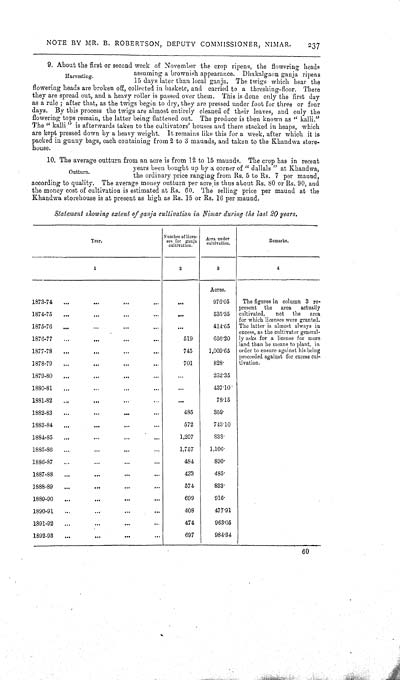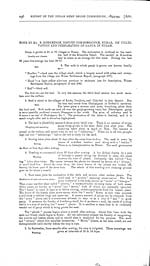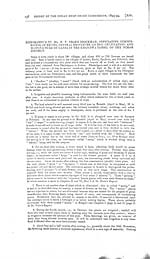Medicine - Drugs > Report of the Indian Hemp Drugs Commission, 1894-1895 > Volume III
(241) Volume 3, Page 237
Thumbnail gallery: Grid view | List view

NOTE BY MR. B. ROBERTSON, DEPUTY COMMISSIONER, NIMAR. 237
Harvesting.
9. About the first or
second week of November the crop ripens, the flowering heads
assuming a brownish appearance. Dhakalgaon ganja ripens
15 days later than local ganja. The twigs which bear the
flowering heads are broken off, collected in baskets, and carried
to a threshing-floor. There
they are spread out, and a heavy roller is passed over them. This
is done only the first day
as a rule; after that, as the twigs begin to dry, they are pressed
under foot for three or four
days. By this process the twigs are almost entirely cleaned of
their leaves, and only the
flowering tops remain, the latter being flattened out. The produce
is then known as " kalli."
The "kalli" is afterwards taken to the cultivators' houses and
there stacked in heaps, which
are kept pressed down by a heavy weight. It remains like this for a
week, after which it is
packed in gunny bags, each containing from 2 to 3 maunds, and taken
to the Khandwa store-
house.
Outturn.
10. The average outturn
from an acre is from 12 to 15 maunds. The crop has in recent
years been bought up by a corner of "dallals" at Khandwa,
the ordinary price ranging from Rs. 5 to Rs. 7 per maund,
according to quality. The average money outturn per acre is thus
about Rs. 80 or Rs. 90, and
the money cost of cultivation is estimated at Rs. 60. The selling
price per maund at the
Khandwa storehouse is at present as high as Rs. 15 or Rs. 16 per
maund.
Statement showing extent of ganja cultivation in Nimar during the last 20 years.
|
Year. |
Number of licen- |
Area under |
Remarks. |
|
1 |
2 |
3 |
4 |
|
Acres. |
|||
|
1873-74 |
976.05 |
The figures in column 3
re- |
|
|
1874-75 |
535.35 |
||
|
1875-76 |
414.65 |
||
|
1876-77 |
519 |
656.20 |
|
|
1877-78 |
745 |
1,009.65 |
|
|
1878-79 |
701 |
828. |
|
|
1879-80 |
252.35 |
||
|
1880-81 |
437.10 |
||
|
1881-82 |
78.15 |
||
|
1882-83 |
485 |
359. |
|
|
1883-84 |
572 |
743.10 |
|
|
1884-85 |
1,207 |
838. |
|
|
1885-86 |
1,757 |
1,106. |
|
|
1886-87 |
484 |
830. |
|
|
1887-88 |
433 |
485. |
|
|
1888-89 |
574 |
833. |
|
|
1889-90 |
699 |
916. |
|
|
1890-91 |
408 |
477.91 |
|
|
1891-92 |
474 |
963.05 |
|
|
1892-93 |
697 |
984.34 |
60
Set display mode to: Large image | Zoom image | Transcription
Images and transcriptions on this page, including medium image downloads, may be used under the Creative Commons Attribution 4.0 International Licence unless otherwise stated. ![]()
| India Papers > Medicine - Drugs > Report of the Indian Hemp Drugs Commission, 1894-1895 > Volume III > (241) Volume 3, Page 237 |
|---|
| Description | Volume 3: Appendices. Miscellaneous. |
|---|---|
| Attribution and copyright: |
|




